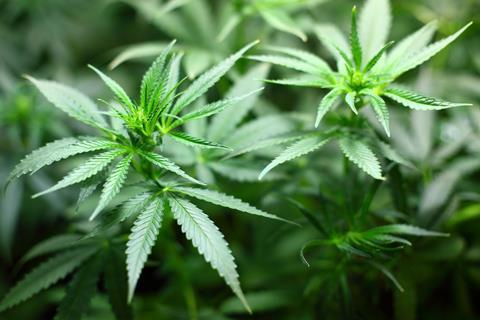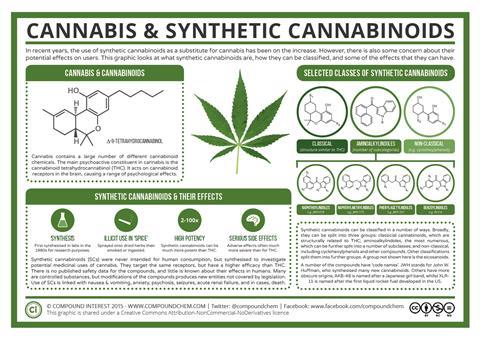The COVID-19 pandemic has caused a worldwide upheaval, with scientists working tirelessly to find effective treatments and preventives. While many pharmaceutical companies have been racing to develop vaccines, the search for antiviral compounds is also ongoing. And in a surprising twist, cannabis is emerging as a potential solution.
Compounds found in cannabis, including terpenes, cannabidiol (CBD), and delta-9-tetrahydrocannabinol (D-9-THC), have been found to have antiviral properties. Researchers have been investigating the potential of these compounds to fight viruses, including human immunodeficiency virus (HIV), hepatitis C virus (HCV), herpes simplex virus (HSV), and most recently, the severe acute respiratory syndrome coronavirus-2 (SARS-CoV-2) responsible for COVID-19. Studies suggest that terpenes, including alpha-pinene, beta-pinene, and limonene, can inhibit the replication of viruses such as HCV, HSV-1, and HSV-2. Meanwhile, CBD, a non-psychoactive compound, known for its potential therapeutic benefits in reducing pain and anxiety, can effectively inhibit the replication of the SARS-CoV-2 virus in human lung cells and have immunomodulatory effects that may have potential in the treatment of viral infections. These findings are particularly exciting given that CBD is widely available and legal in many countries. However, more research is needed to determine the optimal dosage and delivery method to exert antiviral activity. Further, research has shown that D-9-THC, a psychoactive compound, inhibits the replication of HIV in human cells and has antiviral activity against the hepatitis C virus.

Stigma, legal hurdles and more
Cannabis has been used for thousands of years for medicinal and recreational purposes. Yet, despite this long history of use, the plant remains largely misunderstood and stigmatised in many parts of the world. This has resulted in numerous challenges for researchers seeking to study the therapeutic potential of cannabis, including stigma, legal hurdles, and issues with standardisation. Cannabis is often associated with marijuana but they do not mean the same. According to the National Centre for Complementary and Integrative Health, U.S.A., cannabis includes all products derived from plants such as Cannabis sativa, Cannabis indica and Cannabis ruderalis. In contrast, marijuana refers to the products derived from these plants containing THC. Cannabis is also known as an illicit drug as it possesses psychoactive effects that can result in several mental and physical health problems. Therefore, cannabis has been demonised for decades as a dangerous drug, despite mounting evidence of its potential benefits. This stigma has led to a variety of misconceptions and biases.
Cannabis compounds are used off-license in some countries for medical purposes to treat certain diseases and alleviate symptoms such as chronic pain, nausea etc. Specifically, drugs containing cannabis have been found to help treat epilepsy, vomiting and nausea caused by cancer chemotherapy, and improve the appetite of HIV-infected patients. In addition, cannabis compounds have been reported to possess the promising potential to be used as analgesics for neuropathic pain. However, many people still believe that cannabis is a highly addictive drug with no medical benefits. This has led to a lack of interest and funding for research on the plant, as well as a reluctance on the part of many researchers to explore its potential therapeutic uses. Perhaps the biggest challenge facing researchers in studying cannabis is the complex web of legal regulations surrounding the plant. Cannabis remains a Schedule I drug under federal law in the United States, meaning that it is considered as having no accepted medical use with a high potential for abuse. This classification has made it difficult for researchers to obtain the plant for study. Researchers who wish to study cannabis must navigate a complex and time-consuming process that involves obtaining approval from multiple government agencies and complying with various regulations and restrictions. In addition, many countries worldwide still have strict laws prohibiting the use and possession of cannabis, which can make it difficult for researchers to study the plant in a clinical setting.

Standardisation
Finally, another challenge facing researchers who want to study cannabis is the lack of standardisation inherent in its chemical composition. Cannabis contains hundreds of different compounds, including cannabinoids, terpenes, and phenolic compounds, which may have different effects on the body. Cannabinoids are usually stored as acids in the plant. After heat treatment or processing, the acids can gradually decarboxylise into other forms, such as THC, CBD, cannabinol, cannabinodiol, cannabitriol, cannabicyclol, cannabigerol and cannabielsoin. Among them, D-9-THC and CBD are the main cannabinoids. Interestingly, some research studies have shown opposing effects of these two main cannabinoid compounds. When both compounds were administered simultaneously, CBD could block the effects of D-9-THC. Besides cannabinoids, pungent-smelling terpenes are produced by cannabis plants to repel pests and attract pollinators. Terpenes such as monoterpenes and sesquiterpenes are aromatic essential oil secreted from the same glands of a cannabis plant that produce cannabinoids, i.e. THC and CBD. More than 200 types of terpenes have been reported from different plant genotypes of cannabis.
Therefore, the composition of cannabis can vary widely depending on factors such as the plant’s genotype, growing conditions, and processing method. This can make it difficult for researchers to compare the results of different studies and identify the most effective compounds for specific therapeutic uses. In addition, the lack of standardisation can also make it difficult for doctors to prescribe cannabis as a treatment, as they may not know exactly what compounds are present in the product their patients are using.

Although cannabis compounds show promise as antiviral agents, unanswered questions remain. For instance, what is the optimal dose of cannabis compounds for antiviral activity, and what are the potential side effects of using them in human trials? Additionally, how can cannabis compounds be effectively delivered to target viruses? Currently, cannabis used for medical purposes is administered orally or via a medical vaporising device. Nonetheless, the potential of cannabis as an antiviral agent cannot be dismissed. Given the ongoing COVID-19 pandemic and the potential for future viral outbreaks, there is a critical need for new antiviral treatments and preventives. Cannabis could potentially be a life-saving option.
Read Dr Wee Sim Choo’s review on cannabis as antivirals in Journal of Applied Microbiology here.








No comments yet